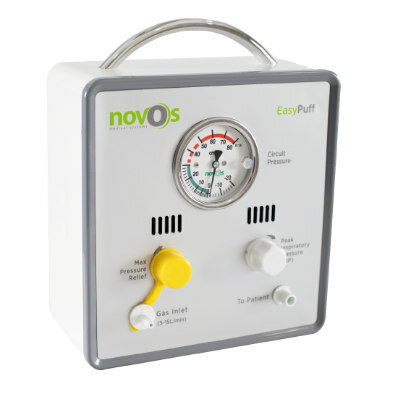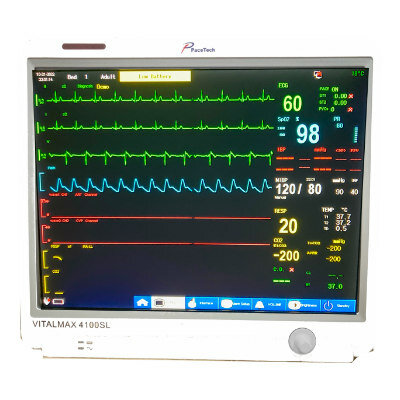First Stand-Alone, Flexible, Fully Organic Bioelectronic Device Paves Way for Soft and Safe Medical Implants
|
By HospiMedica International staff writers Posted on 12 Jul 2023 |

Amidst the significant advancements being made in medical care, researchers are also finding out that adopting individualized approaches can further enhance the efficacy of these treatments. As a result, clinicians require approaches that can continuously monitor physiological signals as well as personalize responsive delivery of therapeutics. Implantable bioelectronic devices play a vital role in such treatments, although their widespread adoption has been hampered by various challenges such as the requirement of specialized components for signal acquisition, processing, data transmission, and powering. Until now, developing an implantable device with such capabilities has involved the use of various rigid and non-biocompatible components that can cause tissue disruption and patient discomfort. Such devices need to be biocompatible, flexible, and stable for remaining inside the body over the long term while simultaneously being fast and sensitive for recording rapid, low-amplitude biosignals and still transmitting data required for external analysis.
Researchers at Columbia Engineering (New York, NY, USA) have now developed the first ever stand-alone, conformable, completely organic bioelectronic device that is capable of acquiring and transmitting neurophysiologic brain signals, as well as providing the power required for its operation. Approximately 100 times smaller than a human hair, the device is built on an organic transistor architecture that integrates a vertical channel and a miniaturized water conduit with long-term stability, high electrical performance, and low-voltage operation to avoid any damage to biological tissue. Researchers and clinicians were well aware of the need for transistors that simultaneously featured low voltage of operation, biocompatibility, performance stability, conformability for in vivo operation; and high electrical performance, including fast temporal response, high transconductance, and crosstalk-free operation. Despite silicon-based transistors being the most established technologies, they are hardly a perfect solution due to their hard, rigid properties, and inability to establish a highly efficient ion interface with the body.
To address these challenges, the researchers introduced a scalable, self-contained, sub-micron IGT (internal-ion-gated organic electrochemical transistor) architecture, the vIGT. The team incorporated a vertical channel arrangement that increases the intrinsic speed of the IGT architecture by optimizing channel geometry and enabling a high-density arrangement of transistors next to each other – 155,000 transistors per centimeter square. The vIGTs are made of biocompatible materials available in the market that do not need encapsulation in biological environments and are not affected by exposure to water or ions. The channel’s composite material can be reproducibly manufactured in large quantities and is solution-processible, allowing it to be used in a broad range of fabrication processes. Additionally, they are flexible and compatible with integration into a wide variety of conformable plastic substrates. They also offer long-term stability, low inter-transistor crosstalk, and high-density integration capacity, enabling the fabrication of efficient integrated circuits.
Using advanced nanofabrication techniques to miniaturize and densify these transistors at submicro-meter scales, the researchers increased the speed of operation even further. In order to develop the architecture, the team was required to first develop an understanding of the challenges in diagnosing and treating patients suffering from neurological disorders such as epilepsy, along with the methodologies presently in use. By combining high-speed, flexibility, and low-voltage operation, the transistors can be used for neural signal recording and data transmission, as well as for powering the device, resulting in a fully conformable implant. Using this feature, the researchers demonstrated fully soft and confirmable implants which can record and transmit high-resolution neural activity from outside, on the surface of the brain, as well as inside, deep within the brain. The researchers will now work with neurosurgeons to validate the capabilities of vIGT-based implants in the operating room and aim to develop soft and safe implants capable of detecting and identifying different pathological brain waves created by neurological disorders.
“This work will potentially open a wide range of translational opportunities and make medical implants accessible to a large patient demographic who are traditionally not qualified for implantable devices due to the complexity and high risks of such procedures,” said Jennifer Gelinas, assistant professor of neurology, electrical and biomedical engineering and director of the Epilepsy and Cognition Lab.
Related Links:
Columbia Engineering
Latest Surgical Techniques News
- Hydrogel-Based Miniaturized Electric Generators to Power Biomedical Devices
- Custom 3D-Printed Orthopedic Implants Transform Joint Replacement Surgery
- Wearable Technology Monitors and Analyzes Surgeons' Posture during Long Surgical Procedures
- Cutting-Edge Imaging Platform Detects Residual Breast Cancer Missed During Lumpectomy Surgery
- Computational Models Predict Heart Valve Leakage in Children
- Breakthrough Device Enables Clear and Real-Time Visual Guidance for Effective Cardiovascular Interventions
- World’s First Microscopic Probe to Revolutionize Early Cancer Diagnosis
- World’s Smallest Implantable Brain Stimulator Demonstrated in Human Patient

- Robotically Assisted Lung Transplants Could Soon Become a Reality
- AI to Provide Heart Transplant Surgeons with New Decision-Making Data
- New Surgical Tool Empowers Precision and Confidence in Operating Room
- Future Muscle-Powered Surgical Robots Could Perform Minimally Invasive Procedures inside Body
- Non-Invasive Technique Combines Cardiac CT with AI-Powered Blood Flow for Heart Bypass Surgery
- First-Of-Its-Kind Device Repairs Leaky Tricuspid Heart Valve
- New Signaling Method Enables Precise Localization of Miniature Robots and Surgical Instruments inside Body
- Novel Catheter System Enables Safer, More Cost-Effective Transseptal Procedures
Channels
Artificial Intelligence
view channel
AI-Powered Algorithm to Revolutionize Detection of Atrial Fibrillation
Atrial fibrillation (AFib), a condition characterized by an irregular and often rapid heart rate, is linked to increased risks of stroke and heart failure. This is because the irregular heartbeat in AFib... Read more
AI Diagnostic Tool Accurately Detects Valvular Disorders Often Missed by Doctors
Doctors generally use stethoscopes to listen for the characteristic lub-dub sounds made by heart valves opening and closing. They also listen for less prominent sounds that indicate problems with these valves.... Read moreCritical Care
view channel
Deep-Learning Model Predicts Arrhythmia 30 Minutes before Onset
Atrial fibrillation, the most common type of cardiac arrhythmia worldwide, affected approximately 59 million people in 2019. Characterized by an irregular and often rapid heart rate, atrial fibrillation... Read more
Breakthrough Technology Combines Detection and Treatment of Nerve-Related Disorders in Single Procedure
The peripheral nervous system (PNS) serves as the communication network that links the brain and spinal cord to every other part of the body. It consists of two parts: the somatic nervous system, which... Read morePatient Care
view channel
Surgical Capacity Optimization Solution Helps Hospitals Boost OR Utilization
An innovative solution has the capability to transform surgical capacity utilization by targeting the root cause of surgical block time inefficiencies. Fujitsu Limited’s (Tokyo, Japan) Surgical Capacity... Read more
Game-Changing Innovation in Surgical Instrument Sterilization Significantly Improves OR Throughput
A groundbreaking innovation enables hospitals to significantly improve instrument processing time and throughput in operating rooms (ORs) and sterile processing departments. Turbett Surgical, Inc.... Read more
Next Gen ICU Bed to Help Address Complex Critical Care Needs
As the critical care environment becomes increasingly demanding and complex due to evolving hospital needs, there is a pressing requirement for innovations that can facilitate patient recovery.... Read moreGroundbreaking AI-Powered UV-C Disinfection Technology Redefines Infection Control Landscape
Healthcare-associated infection (HCAI) is a widespread complication in healthcare management, posing a significant health risk due to its potential to increase patient morbidity and mortality, prolong... Read moreHealth IT
view channel
Machine Learning Model Improves Mortality Risk Prediction for Cardiac Surgery Patients
Machine learning algorithms have been deployed to create predictive models in various medical fields, with some demonstrating improved outcomes compared to their standard-of-care counterparts.... Read more
Strategic Collaboration to Develop and Integrate Generative AI into Healthcare
Top industry experts have underscored the immediate requirement for healthcare systems and hospitals to respond to severe cost and margin pressures. Close to half of U.S. hospitals ended 2022 in the red... Read more
AI-Enabled Operating Rooms Solution Helps Hospitals Maximize Utilization and Unlock Capacity
For healthcare organizations, optimizing operating room (OR) utilization during prime time hours is a complex challenge. Surgeons and clinics face difficulties in finding available slots for booking cases,... Read more
AI Predicts Pancreatic Cancer Three Years before Diagnosis from Patients’ Medical Records
Screening for common cancers like breast, cervix, and prostate cancer relies on relatively simple and highly effective techniques, such as mammograms, Pap smears, and blood tests. These methods have revolutionized... Read morePoint of Care
view channel
Critical Bleeding Management System to Help Hospitals Further Standardize Viscoelastic Testing
Surgical procedures are often accompanied by significant blood loss and the subsequent high likelihood of the need for allogeneic blood transfusions. These transfusions, while critical, are linked to various... Read more
Point of Care HIV Test Enables Early Infection Diagnosis for Infants
Early diagnosis and initiation of treatment are crucial for the survival of infants infected with HIV (human immunodeficiency virus). Without treatment, approximately 50% of infants who acquire HIV during... Read more
Whole Blood Rapid Test Aids Assessment of Concussion at Patient's Bedside
In the United States annually, approximately five million individuals seek emergency department care for traumatic brain injuries (TBIs), yet over half of those suspecting a concussion may never get it checked.... Read more
New Generation Glucose Hospital Meter System Ensures Accurate, Interference-Free and Safe Use
A new generation glucose hospital meter system now comes with several features that make hospital glucose testing easier and more secure while continuing to offer accuracy, freedom from interference, and... Read moreBusiness
view channel
Johnson & Johnson Acquires Cardiovascular Medical Device Company Shockwave Medical
Johnson & Johnson (New Brunswick, N.J., USA) and Shockwave Medical (Santa Clara, CA, USA) have entered into a definitive agreement under which Johnson & Johnson will acquire all of Shockwave’s... Read more
















